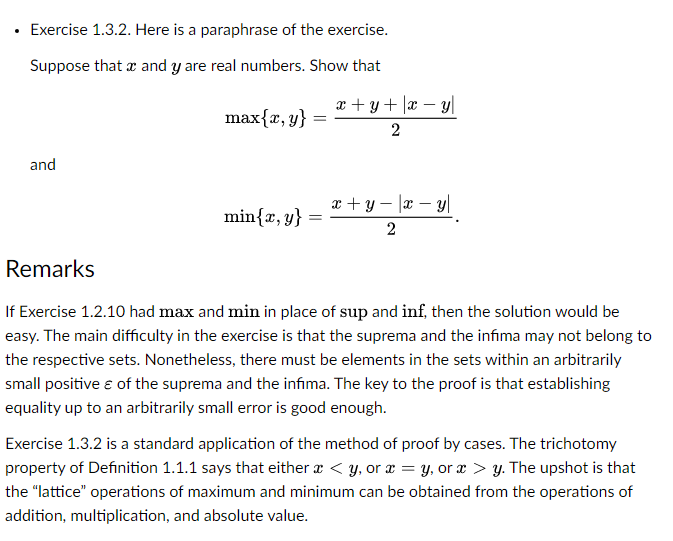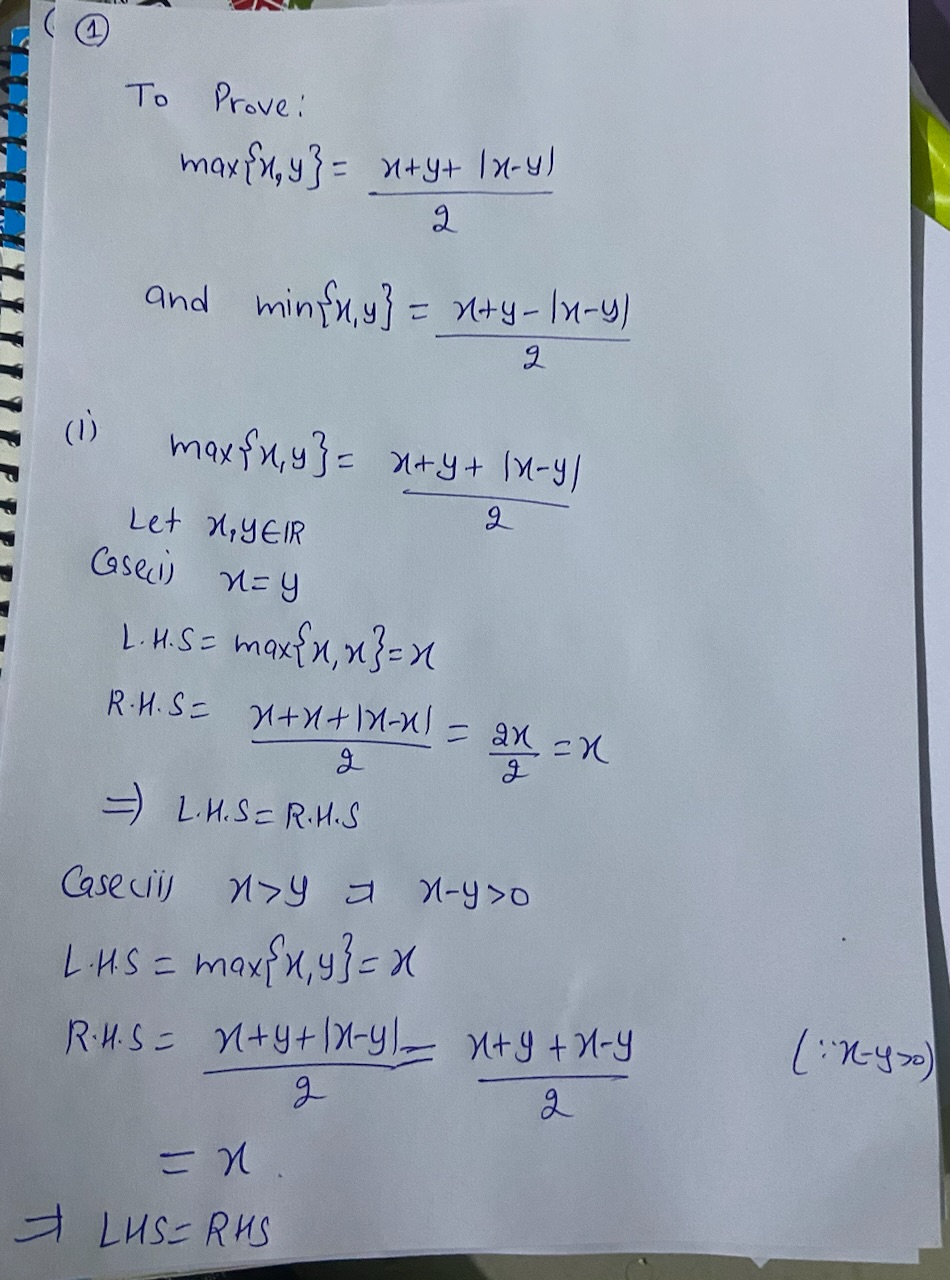Exercise 1.3.2. Here is a paraphrase of the exercise. Suppose that and y are real numbers. Show that and Remarks max{x,y} = min{x,y} = x + y + x - y 2 x + y − |x − y\¸ - 2
Exercise 1.3.2. Here is a paraphrase of the exercise. Suppose that and y are real numbers. Show that and Remarks max{x,y} = min{x,y} = x + y + x - y 2 x + y − |x − y\¸ - 2
Elementary Geometry for College Students
6th Edition
ISBN:9781285195698
Author:Daniel C. Alexander, Geralyn M. Koeberlein
Publisher:Daniel C. Alexander, Geralyn M. Koeberlein
Chapter6: Circles
Section6.CT: Test
Problem 11CT: aIf HP=4, PJ=5, and PM=2, find LP. _ bIf HP=x+1, PJ=x1, LP=8, and PM=3, find x. _
Related questions
Question
Please solve with explanation... use the remarks below as well, if needed

Transcribed Image Text:Exercise 1.3.2. Here is a paraphrase of the exercise.
Suppose that
and y are real numbers. Show that
and
max{x,y} =
min{x,y}
=
x + y + x - y
2
x + y − |x − y\¸
-
2
Remarks
If Exercise 1.2.10 had max and min in place of sup and inf, then the solution would be
easy. The main difficulty in the exercise is that the suprema and the infima may not belong to
the respective sets. Nonetheless, there must be elements in the sets within an arbitrarily
small positive & of the suprema and the infima. The key to the proof is that establishing
equality up to an arbitrarily small error is good enough.
Exercise 1.3.2 is a standard application of the method of proof by cases. The trichotomy
property of Definition 1.1.1 says that either a <y, or x = y, or > y. The upshot is that
the "lattice" operations of maximum and minimum can be obtained from the operations of
addition, multiplication, and absolute value.
Expert Solution
Step 1

Trending now
This is a popular solution!
Step by step
Solved in 3 steps with 3 images

Recommended textbooks for you

Elementary Geometry for College Students
Geometry
ISBN:
9781285195698
Author:
Daniel C. Alexander, Geralyn M. Koeberlein
Publisher:
Cengage Learning

Linear Algebra: A Modern Introduction
Algebra
ISBN:
9781285463247
Author:
David Poole
Publisher:
Cengage Learning

Algebra & Trigonometry with Analytic Geometry
Algebra
ISBN:
9781133382119
Author:
Swokowski
Publisher:
Cengage

Elementary Geometry for College Students
Geometry
ISBN:
9781285195698
Author:
Daniel C. Alexander, Geralyn M. Koeberlein
Publisher:
Cengage Learning

Linear Algebra: A Modern Introduction
Algebra
ISBN:
9781285463247
Author:
David Poole
Publisher:
Cengage Learning

Algebra & Trigonometry with Analytic Geometry
Algebra
ISBN:
9781133382119
Author:
Swokowski
Publisher:
Cengage